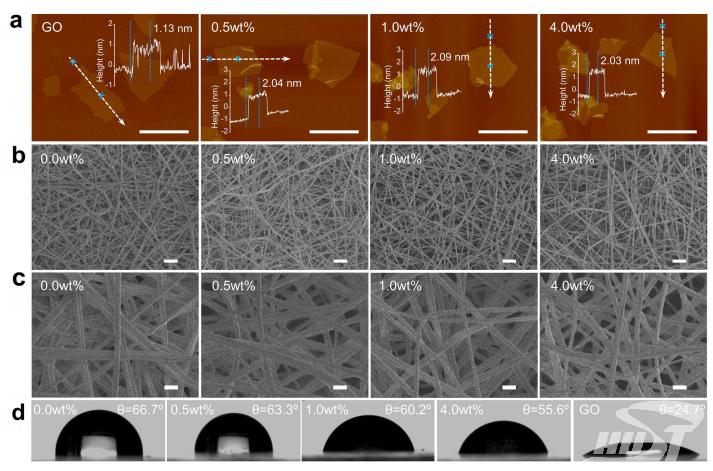On September 16th, npj Regenerative Medicine (IF=14.404), a Nature Portfolio journal, published online an article titled “Multi-biofunctional graphene oxide-enhanced poly-L-lactic acid composite nanofiber scaffolds for ovarian function recovery of transplanted-tissue”, the research result of Professor Xiang Wenpei's team at the Institute of Reproductive Health. This study established a new type of GO/PLLA nanofiber scaffolds with a certain proportion of graphene to accelerate the construction of a microvascular network in the transplanted tissue. After co-transplanting the ovarian cortex, the time of vascularization of ovarian tissue was significantly shortened and the recovery of ovarian function was promoted. This study demonstrates that materials science has great potential for applications in reproductive medicine. It also provides a new method for fertility preservation and plays a guiding role in future clinical and translational research.

Firstly, the team creatively constructed the graphene oxide/poly-L-lactic acid (GO/PLLA) composite nanofiber scaffolds, of which the special structures of hydrophilic surface and porous network are highly favorable for cell infiltration and infiltration after implantation. These new nanofiber scaffolds are suitable for a wide range of tissue engineering applications. The team further determined the optimal graphene oxide concentration in GO/PLLA nanofiber scaffolds for culturing granulosa cells, providing a basis for the use of materials for the co-transplantation of ovarian tissues. Furthermore, the team used the mouse POI model to investigate the effect of co-transplanting the normal ovarian tissue loaded on the 1.0 wt% GO/PLLA nanofiber scaffolds. The results indicated that the co-transplantation could promote the angiogenesis of transplanted ovarian tissue, improve the fusion growth of transplanted ovarian cortex with damaged ovarian tissue of POI mice, and restore the ovarian function as well as the function of the contralateral ovary. Given the marked effect of GO/PLLA nanofiber scaffolds on angiogenesis, the team further investigated the specific molecular pathway of GO/PLLA nanofiber scaffolds in promoting angiogenesis. After carefully exploring the essence through the phenomenon, the team eventually revealed that nitric oxide (NO) production by phosphorylated endothelial nitric oxide synthase (p-eNOS) in vivo was involved with the effect of GO and PLLA on improving the survival rate of the transplanted ovarian cortex.

This study focuses on the issue of ovarian tissue transplantation, which is the intersection of cutting-edge disciplines and the hotspot of female fertility preservation. For the first time, a new type of GO/PLLA nanofiber scaffolds was constructed. These new nanomaterials could be applied to the technique of ovarian cortex transplantation to promote faster implantation of ovarian tissue and recover ovarian functions. In addition, the nanofiber scaffolds can be gradually integrated with the ovarian tissue to some extent in vivo, and biological behaviors such as cell migration, growth, and blood vessel establishment occur, indicating that the material has good biocompatibility. The findings of this study provide not only a new strategy for female fertility preservation but also new ideas for organ transplantation.
The Institute of Reproductive Health is the first institution to complete this paper. Professor Xiang Wenpei is the corresponding author. Xiang has long been engaging in the scientific research and teaching of reproductive medicine, and is dedicated to the research on ovarian aging and stem cell transformation. As the first or corresponding author, Xiang has published more than 50 papers in multiple top journals, including Science Advances, Journal of Advanced Research, Aging-US, Antioxid Redox Signal, Human Reproduction, etc. These original findings have played an active role in promoting the reproductive health of child-bearing age females.
To view the full article, visit https://www.nature.com/articles/s41536-022-00236-5
